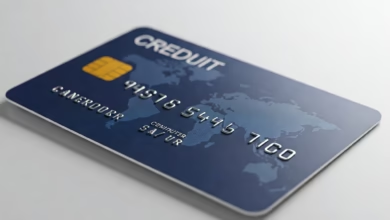What is the Difference Between Secured and Unsecured Loans?
Complete Guide to Secured and Unsecured Loans

When you’re considering taking out a loan, you’ll encounter terms like “secured” and “unsecured.” Understanding the difference between these two types of loans is crucial for making informed financial decisions and choosing the option that best suits your needs and circumstances. This straightforward guide breaks down the key distinctions in plain language.
What are Secured Loans? Leveraging Assets for Borrowing Power

Secured loans are backed by an asset, known as collateral. This means that if you, the borrower, fail to repay the loan as agreed, the lender has the legal right to seize and sell the collateral to recover their losses.
- The Role of Collateral in Secured Loans: Common examples of collateral include your home (for a mortgage), your car (for an auto loan), or other valuable assets. The value of the collateral often influences the loan amount you can borrow.
- Lower Interest Rates Often Associated with Secured Loans: Because secured loans pose less risk to the lender (they have the collateral as a safety net), they often come with lower interest rates compared to unsecured loans. This can save you money on interest payments over the life of the loan.1
- Examples of Common Secured Loans: Mortgages, auto loans, home equity loans, and sometimes even pawn shop loans are all examples of secured loans. In each case, a specific asset is tied to the loan agreement.
What are Unsecured Loans? Borrowing Based on Creditworthiness
Unsecured loans, on the other hand, are not backed by any specific asset. Instead, lenders approve these loans based primarily on your creditworthiness – your credit history, credit score, income, and overall financial stability.
- Reliance on Creditworthiness for Unsecured Loan Approval: Lenders assess your ability to repay the loan based on your past financial behavior and your current financial situation. A good credit score is typically essential for qualifying for an unsecured loan with favorable terms.
- Potentially Higher Interest Rates Due to Increased Lender Risk: Since there’s no collateral to recover in case of default, unsecured loans are considered riskier for lenders. As a result, they often carry higher interest rates compared to secured loans.
- Common Examples of Unsecured Loans: Personal loans, credit cards, and student loans (in many cases) are examples of unsecured loans. These are granted based on your promise to repay.
Key Differences Summarized: Secured vs. Unsecured Loans at a Glance

To help you easily grasp the distinctions, here’s a quick comparison of the key differences between secured and unsecured loans:
| Feature | Secured Loan | Unsecured Loan |
| Collateral | Required (asset backs the loan) | Not required |
| Risk for Lender | Lower | Higher |
| Interest Rates | Generally lower | Generally higher |
| Loan Limits | Potentially higher (based on asset value) | Potentially lower (based on credit) |
| Repossession/Foreclosure Risk | Yes, if default occurs | No direct asset seizure (but legal action possible) |
| Approval Based On | Creditworthiness AND asset value | Primarily creditworthiness |
| Examples | Mortgages, auto loans, home equity loans | Personal loans, credit cards, student loans |
Choosing the Right Loan Type: Factors to Consider for Your Situation
The best type of loan for you depends on several factors specific to your needs and financial situation:
- Your Borrowing Need: What are you borrowing the money for? A mortgage for a house will naturally be a secured loan. A smaller, more flexible need might be met with an unsecured personal loan.
- Your Credit Score: A strong credit score opens up more options for unsecured loans with better terms. A lower score might make it harder to qualify for unsecured loans or result in higher interest rates.
- Your Assets: Do you have valuable assets you’re willing to use as collateral? If so, a secured loan might offer a lower interest rate. However, be aware of the risk of losing that asset if you can’t repay the loan.
- Risk Tolerance: Are you comfortable with the risk of losing an asset if you default on a secured loan? If not, an unsecured loan might be a safer option, even if the interest rate is slightly higher.
Making an Informed Decision: Weighing the Pros and Cons

Ultimately, the decision of whether to choose a secured or unsecured loan involves carefully weighing the pros and cons of each option in relation to your individual circumstances. Consider the interest rates, repayment terms, your creditworthiness, and the potential risks involved. Understanding these fundamental differences will empower you to borrow responsibly and choose the loan that best aligns with your financial goals.





